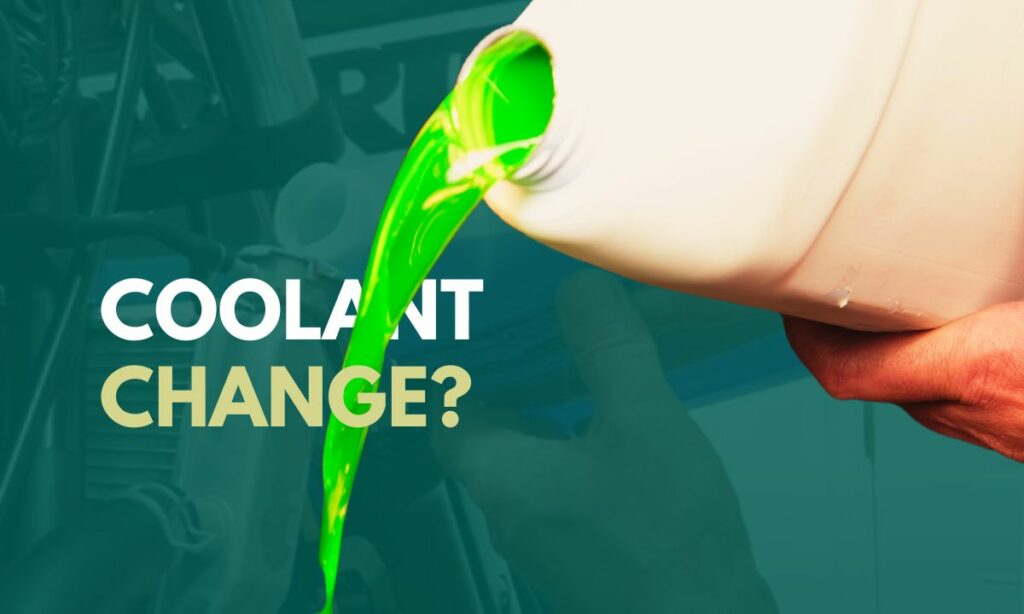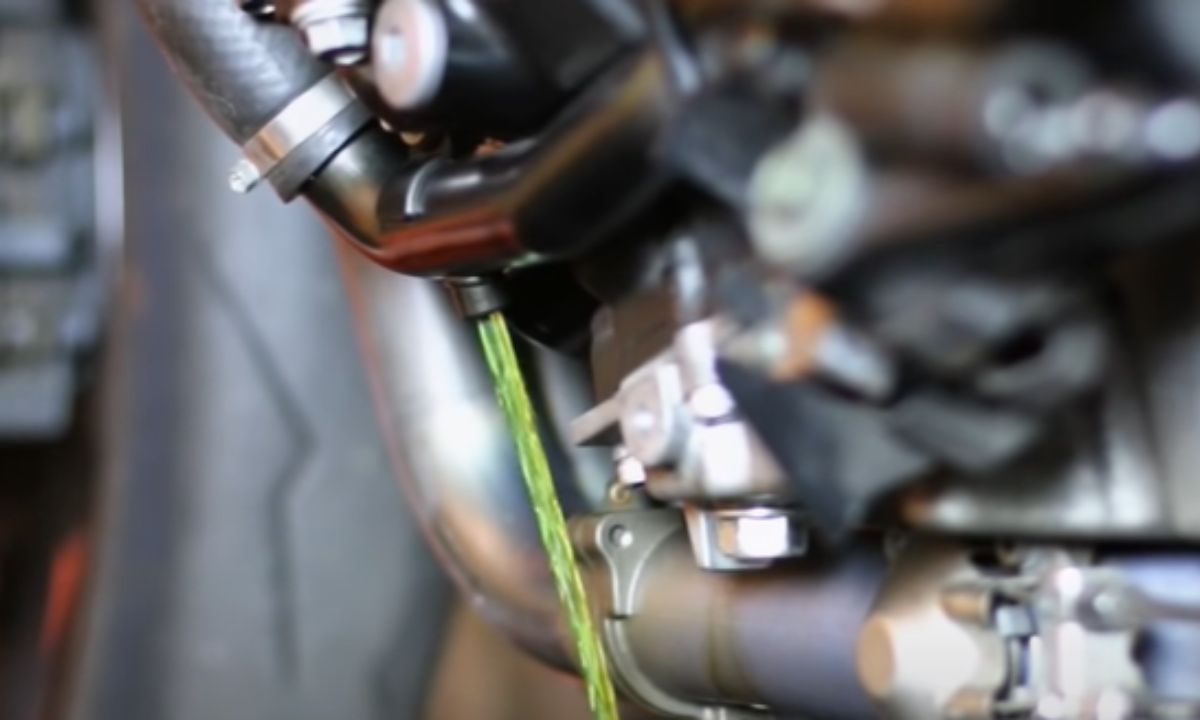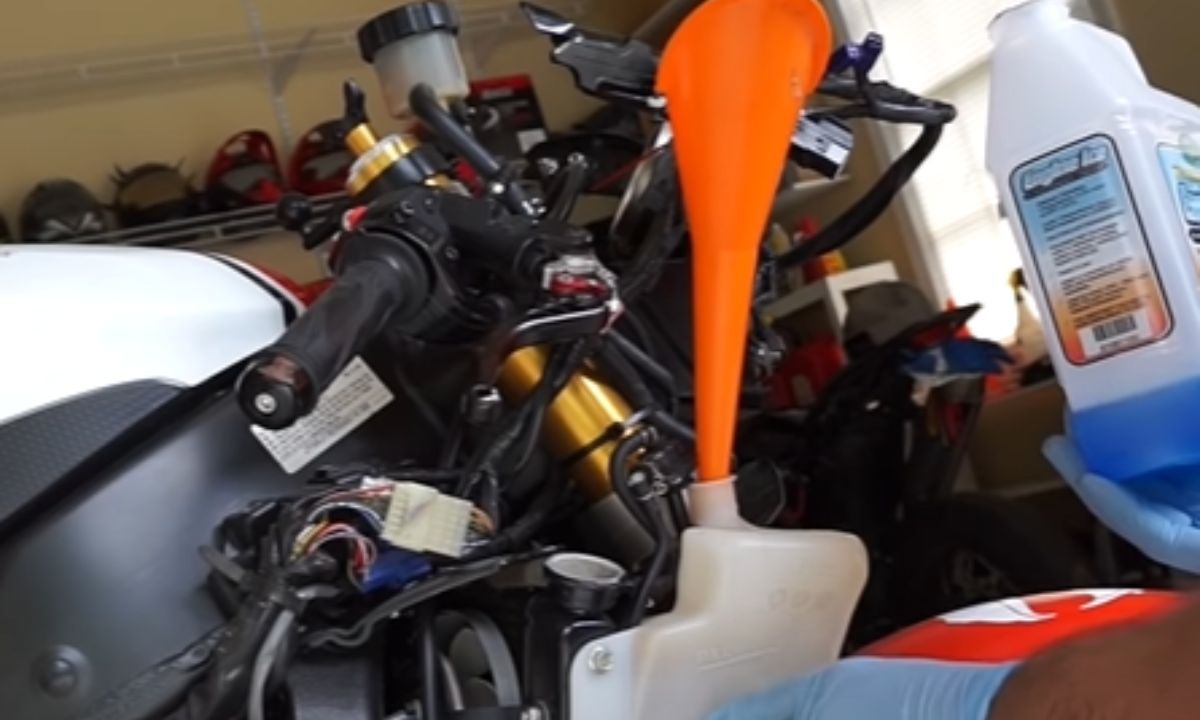Liquid-cooled motorcycles have a superior cooling system. They cool down the engine far better than the air-cooled and oil-cooled motorcycles.
But it also comes with extra maintenance. The coolant needs to be changed regularly.
So how often should the coolant be changed? The motorcycle coolant should be changed every 2 years. In addition, the coolant level should be checked every 5000 miles.
If the levels are low, top up the coolant.
If the motorcycle is maintained well, the coolant can last up to 5 years. But it’s a best practice to change the coolant every 2 to 3 years.
Let’s dive deeper into coolant lifespan, maintenance, and how to change them in a motorcycle.
How long does the coolant last
The coolant in a motorcycle typically lasts between 2 to 5 years.
If it is a specialized long-lasting coolant and the motorcycle is maintained well, the coolant might even last up to 10 years.

But the usual coolant lifespan is somewhere between 2 to 5 years.
Now, why do coolants deteriorate after say 5 years then?
The coolant deterioration is mainly because of the heat.
The coolant absorbs the heat from the engine and cools it down. The heat cycle over the years causes the coolant to lose its cooling efficiency, and anti-freezing and anti-corrosion properties slowly.
The coolant deterioration is discussed in detail later in this section.
Bottomline. Coolant doesn’t last forever and needs to be changed.
When to change to coolant?
Now that we know the coolant does not last forever, how often should we change the coolant on our motorcycle then?
On average, the motorcycle coolant should be changed every 2 years.

If the coolant is long-lasting and of great quality, you can opt for changing every 3 or 4 years. Still, it is recommended to change the coolant once every 2 years.
Motorcycle owner manuals also provide the recommended frequency for coolant change. Usually, the owner manuals recommend the coolant change around 3 years.
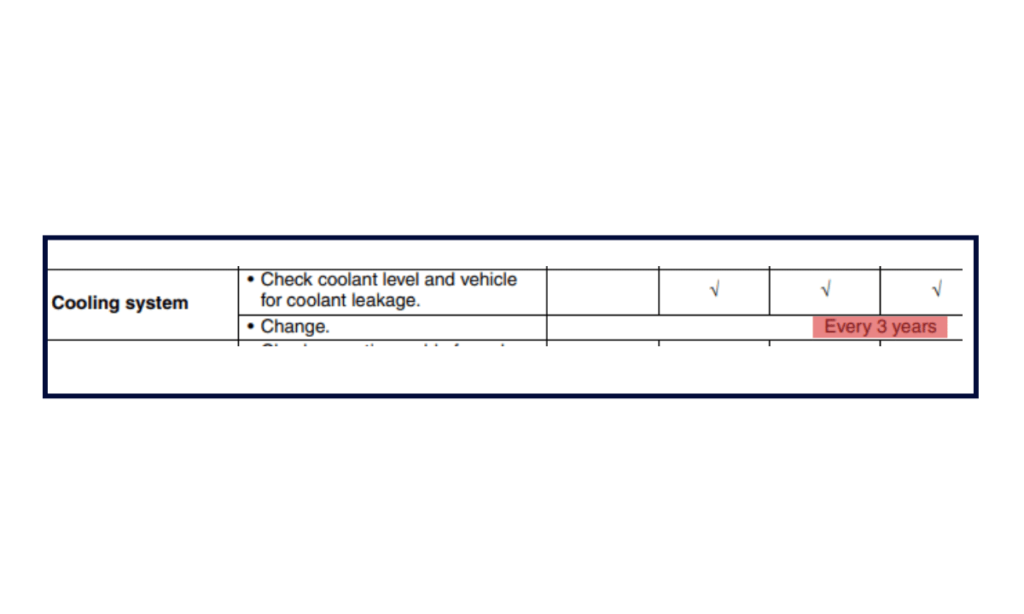
We recommend 2 years is the best. But depending on the motorcycle you ride, the condition it s in, and the owner’s manual recommendation – you can go for the coolant change every 3 to 4 years as well.
How often should I check the coolant levels?
The motorcycle coolant level must be checked every 5000 miles (8000 kilometers).
The best way to do that is to inspect the coolant level every time you take your motorcycle for servicing.
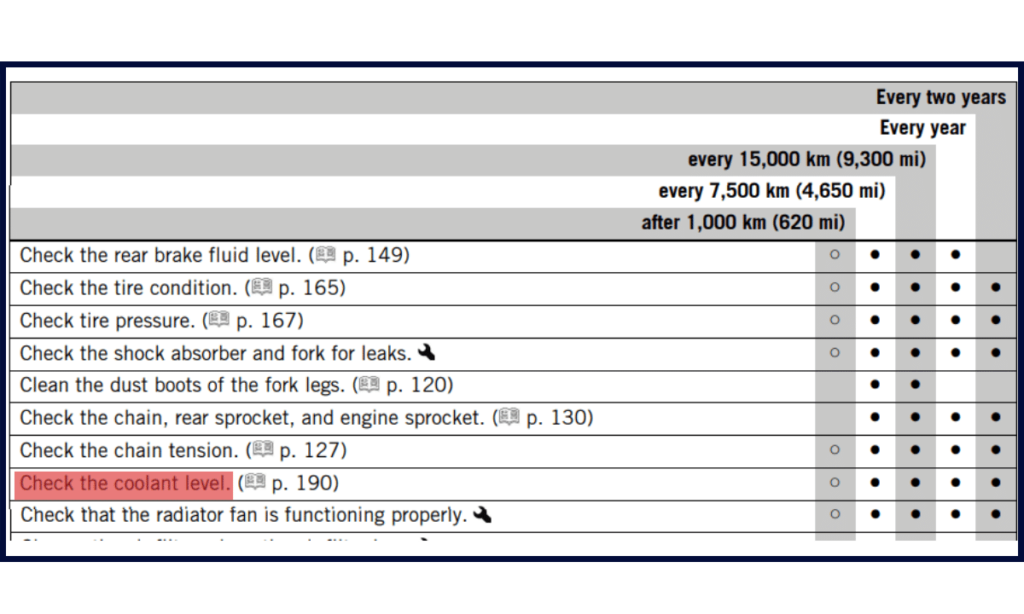
The servicing cycle should coincide with checking the coolant level.
If the coolant level is low or there are leakages, address the leakage and top up the coolant.
Does motorcycle coolant go bad?
The coolant deteriorates over time. Primarily because of the heat. And also oxidation in case the air enters.

Here is how the coolant deteriorates over the years.
First, over time the coolant loses its cooling efficiency. With more cycles and more miles on the motorcycle, the coolant starts to lose its cooling properties. It no longer keeps the engine temperature low.
Second, water evaporates. Over time, the water content on the coolant reduces due to evaporation as well as loss in the form of leakage or absorption. Although you can top up the coolant, there will be more deposit formation.
Third and last, the coolant loses its anti-freezing properties. With more heat cycles and years of engine cooling – the coolant starts to show decay as an anti-freeze. At low temperatures, an old coolant might start to freeze.
For these reasons, it’s not feasible to use the same old coolant for years on your motorcycle.
How to change the motorcycle coolant
Time needed: 1 hour
Tools required: Fresh coolant, drain pan, funnel
- Park the motorcycle on the center stand
Choose a flat horizontal ground surface and park the motorcycle there on its center stand.
- Ensure the engine and all components are cool
Make sure the motorcycle is not heated up. If you have just come back from a ride, wait for an hour. The engine and all other components must be cooled down.
- Locate the drain bolt
The coolant has three outlets – a radiator cap, a reservoir tank cap, and a drain bolt.
The first two are used for checking the coolant levels and topping up. The latter – the drain bolt – is used to drain the coolant.
The drain bolt is at the low point on the water pump cover. This is tricky since its location is different for different models. - Remove the drain bolt
First, place the drain pan below the drain bolt. Only then unscrew the bolt. The coolant starts to drain out slowly into the drain pan.
- Loosen the radiator cap to speed up coolant draining
Loosen, but not remove, the radiator cap at the top. This will make the coolant to drain out faster into the drain pan.
- Empty the reservoir tank
If the reservoir tank has some coolant left, empty it out as well. This is easier said than done. You need to remove the screws and take the reservoir out to empty it. Fit it back once done.
- Once the coolant is drained, screw the drain bolt back
Now the coolant is drained, the drain bolt needs to be back. Use a new washer for the drain bolt. Then screw it tight.
- Optional – flush the cooling system with distilled water
This is purely optional and need not be done to be honest. Still, you can go for a water flush before pouring the fresh coolant. Pour distilled water on the radiator cap and fill it up. Wait for 10-15 mins and drain it by taking out the drain bolt. Then tighten the bolt back.
- Pour the fresh coolant
Now its time to fill in the new coolant. Remove the radiator cap. Pour the coolant using a funnel on the radiator cap hole.
- Pour the new coolant to the reservoir
Repeat the same with the reservoir tank cap and fill the reservoir.
- Put the caps back
Tighten the radiator cap back. Tighten the reservoir tank cap back. The new coolant is the cooling system. You can try shaking the hoses and even the bike a little for the coolant settle down.
Do’s and Donts
If you are changing the coolant by yourself, here are some precautions that you must take:
- If the engine is still hot – do NOT open the radiator, radiator hoses, drain valve, or any cooling system components.
- Always treat the coolant with care. The coolant can be a health hazard and treat it as a toxic substance for the skin.
- Keep the coolant out of reach of children and pets.
- Do not allow the coolant to come in contact with the skin, eyes, or the clothes.
- In case the coolant comes in contact with the skin, rinse the affected area immediately with plenty of water.
FAQs
The coolant can last for 10 years. But it is not recommended to use the coolant for so long. Change the coolant on your motorcycle every 2 to 3 years.
If the coolant has lots of sludge, gunk, and build-up – then it is bad. You can also inspect the radiator cap for sludge. A good coolant will not have too much sludge formation and color deterioration.
High-performance and special coolants claim better cooling on your motorcycle. But personally, I prefer regular coolants and don’t see that big a difference with high-performance or special coolants.
Before you go…
Here are a few more related posts you might be interested in:
- Are motorcycle and car coolants interchangeable?
- When to change – brake fluid, engine oil, fork oil – in a motorcycle
